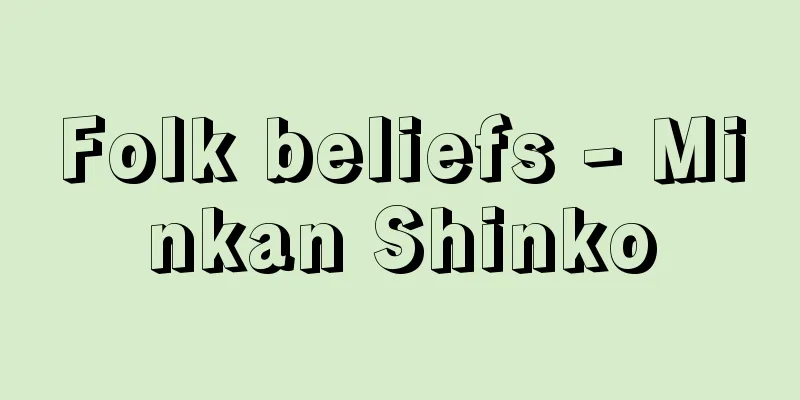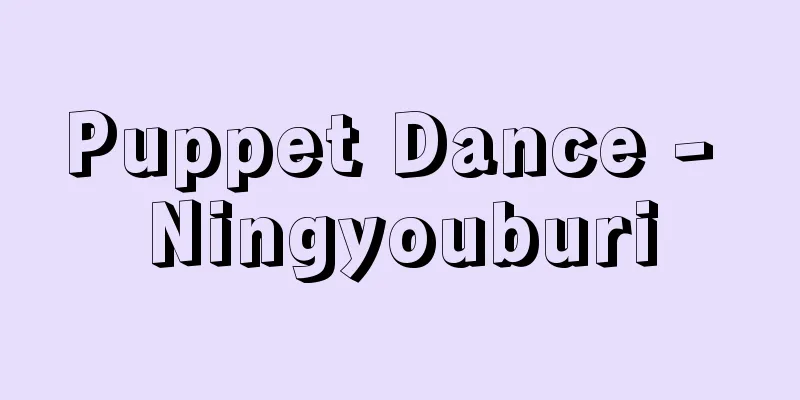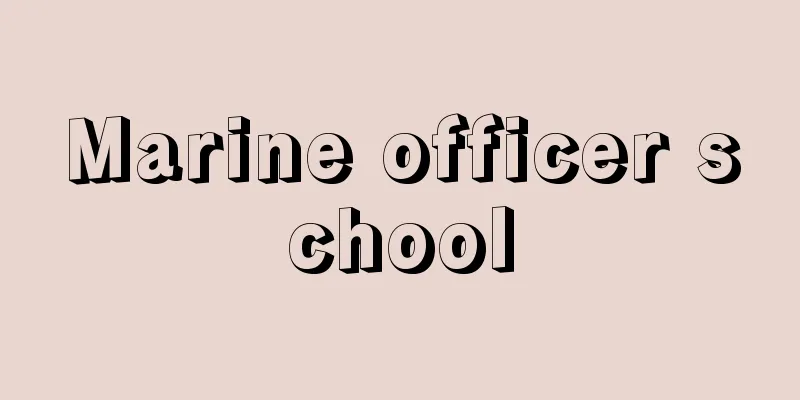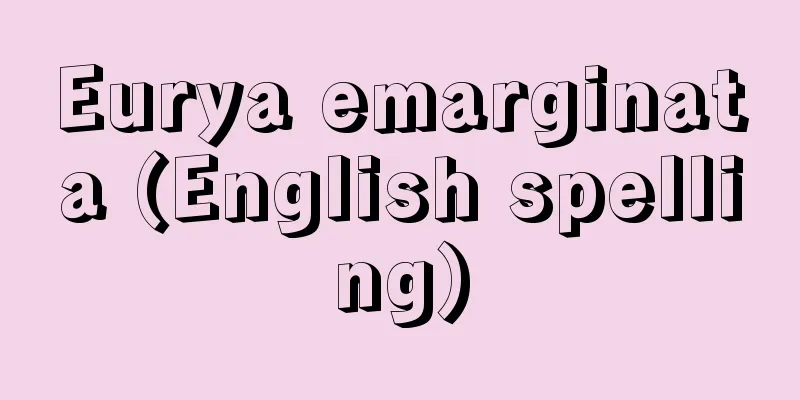Folk beliefs - Minkan Shinko

|
Unlike faith that is preached on the basis of organizations such as temples and shrines, this refers to a magical religious faith believed in by the general public. One example is the faith in nature gods such as mountain gods and water gods. Of course, it cannot be said that the gods and Buddhas of established religions that many people believe in are completely different from nature god worship. However, faith centered on temples and shrines has its deity and a religious founder, while nature god worship recognizes the laws of nature but does not have a personality that governs it. Therefore, there are no doctrines or scriptures. However, there are cases where large shrines worship the nature gods of the mountains and water gods. An example is a shrine that worships the mountain god as Oyamatsumi no Kami. Therefore, it cannot be said that folk faith and faith centered on temples and shrines are completely different things. In order to clarify the form of faith that both of them take, let's look at folk village festivals. The first thing I would like to write about in terms of folk beliefs is the various types of Ko (groups). Ko were originally created to strengthen the organization of Buddhist parishioners, but they began to be formed actively after the Middle Ages, and were established not only for Buddhism but also for the formation of folk beliefs in villages. There are various characteristics of Ko groups, but village organizations include Yama no Kami Ko, Tano Kami Ko, Koshin Ko, and Nijusanya Ko, and some of these groups have a set number of bowls and trays because they hold meals when they hold events. Each group is attended by the head of the household, but in some places Nijusanya Ko is a group for women. Groups that housewives gather in particular include Kannon Ko, Jizo Ko, Koyasu Ko, and Jukyuya Ko, and they pray for safe childbirth and child rearing. There is also Tenjin Ko, a group for children, and in some places Nembutsu Ko is a group for men and women over 60 years old. Although most of the above groups are not directly related to shrines and temples, there are groups called "daisanko" (substitute groups) in which a representative member goes on a pilgrimage to a famous shrine or temple. The representative is chosen by drawing lots, and when he returns home he distributes ofuda (talismans) to the members as souvenirs. Groups vary from town to town, and the rise and fall of groups can be seen depending on the group. Next, I would like to write about the household god festivals in towns and villages. In Nagano Prefecture, there are places where a celebration hall is set up for each group (family group) of the main family and branch families to worship the family god. There are cases where the celebration hall enshrines ancestors, and cases where a famous god or Buddha is enshrined. This group is also called a jirui, and small ones consist of two or three houses. In many cases, families living in villages enshrine the earth god within the compound. However, since the earth god is the god of the land, if the family moves to another location for some reason, the small shrine to the earth god is left behind. It is common to see only the small shrine to the earth god left behind after the family moves to another location. There is also a belief in the household god. This is usually enshrined in a corner of the compound. The deities worshipped there are extremely diverse, including mountain gods, and the deities of the Shinmei (Daijingu), Gion, Hachiman, and Sanno shrines. In Kumano, Wakayama Prefecture, there is an example of a large tree such as a cedar being worshiped as a Jininusama, which may be a sign of the ancient belief in the earth god. The above examples are mainly from farming and mountain villages, but in fishing villages it is a little different. It goes without saying that there is faith in Ebisu, but at sea, the spirit of the ship is worshipped. The spirit of the ship is called "Shigeru" and is said to let people know when the weather is about to change suddenly. The spirit of the ship is placed under the mast. Objects used as deities include male and female dolls, dice, coins, and five grains. There are also cases where the spirit of the net is attached to the opening of a fishing net. Unlike agriculture, fishing is a battle for each net, so there are special customs when there is a poor catch. In the Awa region of Chiba Prefecture, when there is no fishing, people would retreat to the shrine in a ceremony called "Shiomatsuri". Some places also asked the priest or shrine maiden to pray for a good catch. In addition, in the event of a poor catch, the boats would be "Taderu" (the boats are put on the beach and the bottoms are burned). On this occasion, people do not board boats, but offer incense and sacred sake. This is called "Man (Un) Naoshi." The most important thing about Japanese festivals is the idea of purity, and for this, the gods are always worshiped using things from the sea. Even in non-fishing villages, salt and seaweed are always used in rituals. Merchants usually worship Ebisu and Daikoku, and trade is an important issue that also relates to farming and fishing villages. The guardian deities of markets are diverse, including Hiruko, Munakata-no-Okami, Ichikishima-hime, Kotoshironushi, and Okuninushi-no-Mikoto. Many of them originally had natural stones as their deities, and are often seen on roadsides. They were built at the beginning or center of markets, as well as on village and city group boundaries. I have outlined various aspects of folk beliefs above, but I think it is no exaggeration to say that the stone statues of Dosojin, gods of the road and borders, are in a sense representative of folk beliefs. In today's world, where times are changing rapidly, folk beliefs such as those mentioned above may also change rapidly. However, the underlying belief in supernatural beings and the spiritual nature of things is likely to continue to exist, albeit fluctuating, as people aspire to worldly benefits. [Oto Tokihiko] "Japanese Folk Beliefs Theory" by Tokutarou Sakurai, revised edition (1970, Kobundo) " "Dictionary of Folk Beliefs" edited by Tokutarou Sakurai (1980, Tokyodo Publishing) Source: Shogakukan Encyclopedia Nipponica About Encyclopedia Nipponica Information | Legend |
|
社寺などの組織のうえにたって信仰を説くものと違い、一般民衆の間で信じられている呪術(じゅじゅつ)宗教的な信仰をいう。一例をあげれば、山の神、水の神などの自然神に対する信仰などである。もちろん、多くの人々が信じている既成宗教の神仏が自然神崇拝とまったく別物であるとはいえない。ただ、社寺を中心とする信仰にはその祭神、教祖などといわれる宗祖があるが、自然神崇拝には自然の摂理というものは認められるが、それを統率する人格というものはない。したがって教理、経典などもない。しかし、自然神である山の神、水の神を大きな神社が祭神としている例がある。山の神を大山祇神(おおやまつみのかみ)として祀(まつ)っている神社などがそれである。それゆえ、民間信仰と、社寺を中心とした信仰とがまったく別物だとは断定はできない。双方がどういう信仰形態をとっているかを明らかにするため、村落の民間祭事をみていきたい。 民間の信仰についてまず記述したいのは各種の講(こう)である。講は本来、仏教の檀徒(だんと)組織を強固にするためにつくられたものであるが、中世以後盛んに形成されるようになり、仏教のみでなく村落の民間信仰の結成にも設けられることとなった。講組にはいろいろな特色があるが、村組織としての講には山の神講、田の神講、庚申(こうしん)講、二十三夜講などがあり、これらの講は開くとき会食するので、一定の膳椀(ぜんわん)を備えているものがあった。各講は家の主人が集まるが、二十三夜講は女の講となっている所がある。主婦がとくに集まる講には、観音(かんのん)講、地蔵講、子安(こやす)講、十九夜講などがあり、安産・子育てを祈る。そのほか子供の講として天神講があり、念仏講は60歳以上の男女が集まるという所がある。以上の講は社寺とは直接に関係しないものが多いが、講のなかに代参講というのがあり、有名な社寺へ講員のなかの代表者が参詣(さんけい)に出かけることになっている。くじ引きで代表者を決め、帰宅すると御札(おふだ)を講員に土産(みやげ)として配る。講は町村によってさまざまであり、また講によって盛衰がみられる。 次に町村における家の神祭りについて記しておきたい。長野県では本家・分家の一マキ(同族集団)で祝(いわ)い殿(でん)を設けて、同族神を祀っている所がある。祝い殿は、先祖を祀っている例と、著名な神仏を勧請(かんじょう)したものとがある。この一マキを地類とも称しており、小さいのは2、3軒でなっている。村里に暮らしている家では、地神(じがみ)を屋敷内に祀っている例が多い。ただ地神は土地の神なので、その家が何かの理由で他へ移転するときは、地神の小祠(しょうし)はそのまま置いておく。家が他へ移ったあとに、地神の小祠だけが取り残されて残っているのをよくみかけることがある。また屋敷神信仰もある。これはだいたい屋敷の一隅に祀られている。その祭神は山の神や、神明(大神宮)、祇園(ぎおん)、八幡(はちまん)、山王(さんのう)の諸社の神などきわめて多様である。和歌山県熊野で地主様といって杉などの大木を祀っている例があり、地神信仰の古様を伝えているのかもしれない。 以上の例は農山村を中心として述べたが、漁村においてはすこし違っている。えびす神信仰のことはいうまでもないが、海上では船霊(ふなだま)様を祀っている。船霊様が「シゲル」といって、天候が急変するとき知らせてくれるという。船霊様は帆柱を立てるところの下に納める。御神体として男女の人形(ひとがた)、さいころ、銭、五穀などが用いられる。漁網には、その張り口に網霊(おおだま)様というのを取り付ける例がある。漁業は農業と違って一網ごとが勝負であるので、不漁のときは特殊な慣習がある。千葉県安房(あわ)地方では、漁がないと「シオマツリ」といってお宮へお籠(こも)りした。また神主(かんぬし)や巫女(みこ)を頼んで大漁祈願をする所もあった。また不漁の場合、船を「タデル」(船を州にあげ、船底を焼く)ことがある。このときは船には乗らず線香と御神酒(おみき)をあげる。これを「マン(運(うん))ナオシ」とよんでいる。日本人の神祭りについてだいじなことは清浄の観念で、これにはかならず海の物を用いて神を祀ることである。漁村でなくてもかならず神事には塩と海藻を用いることになっている。 商家では、えびす・大黒を祀るのが普通であるが、とくに交易の問題は農漁村とも関係するだいじな問題である。市(いち)の守護神である市神(いちがみ)は、蛭子(ひるこ)神、宗像(むなかた)大神、市杵島(いちきしま)姫、事代主(ことしろぬし)神、大国主命(おおくにぬしのみこと)など多様である。もともと自然石を神体としたものが多く、路傍によくみかける。市の起点や中心に、また村の境や市組の境などにも建てられた。 以上、民間信仰の諸相を概見したが、道の神、境の神として石像の建てられている道祖神は、ある意味において民間信仰の代表物と称しても過言ではないと思う。時代の変遷の激しい現代においては、前述のような民間信仰も急速に変転していくかもしれない。が、その根底にある超自然的な存在とか、事物に霊性を認める信仰心は、現世利益(げんぜりやく)を志向しつつ、変動しながらも存続していくと思われる。 [大藤時彦] 『桜井徳太郎著『日本民間信仰論』増訂版(1970・弘文堂)』▽『桜井徳太郎編『民間信仰辞典』(1980・東京堂出版)』 出典 小学館 日本大百科全書(ニッポニカ)日本大百科全書(ニッポニカ)について 情報 | 凡例 |
<<: Ministry of the Civil Service - Minkan Seiyo
>>: Private magazine - Minkanzasshi
Recommend
David Borisovich Ryazanov
A Russian revolutionary activist and Soviet Marxi...
Phalaropodidae
...A general term for birds of the family Phalaro...
Utazawa Tosa
…In 1888, he took the name of the third generatio...
Assy
…Religious themes such as the Holy Face, along wi...
Thank you
...Such endurance sports, as typified by seal-pok...
He Xiangu - Kasenko
…The eight immortals in Chinese folk legends are ...
Kaitou (English spelling) xie-dou; hsieh-tou
Armed fighting between villages in pre-modern Chin...
Intention - Ito (English spelling) Absicht; intention
A term used in Gestalt psychology. It is the deter...
Himiko
Year of birth: Unknown Queen of Yamataikoku, which...
Government-run Miike Mine
…Miike coal was reportedly first discovered on Mt...
Air-membrane structure - pneumatic structure
This refers to structures that are formed so that...
Job wage (English spelling)
Wages are determined based on the worker's jo...
Unification of Laws
There is the unification of domestic law and the u...
Sanshu [village] - Samizu
A village in Kamiminochi County in northern Nagano...
Tweed - Tweed (English spelling)
Originally, it was a woolen fabric with a 2-2 twi...









